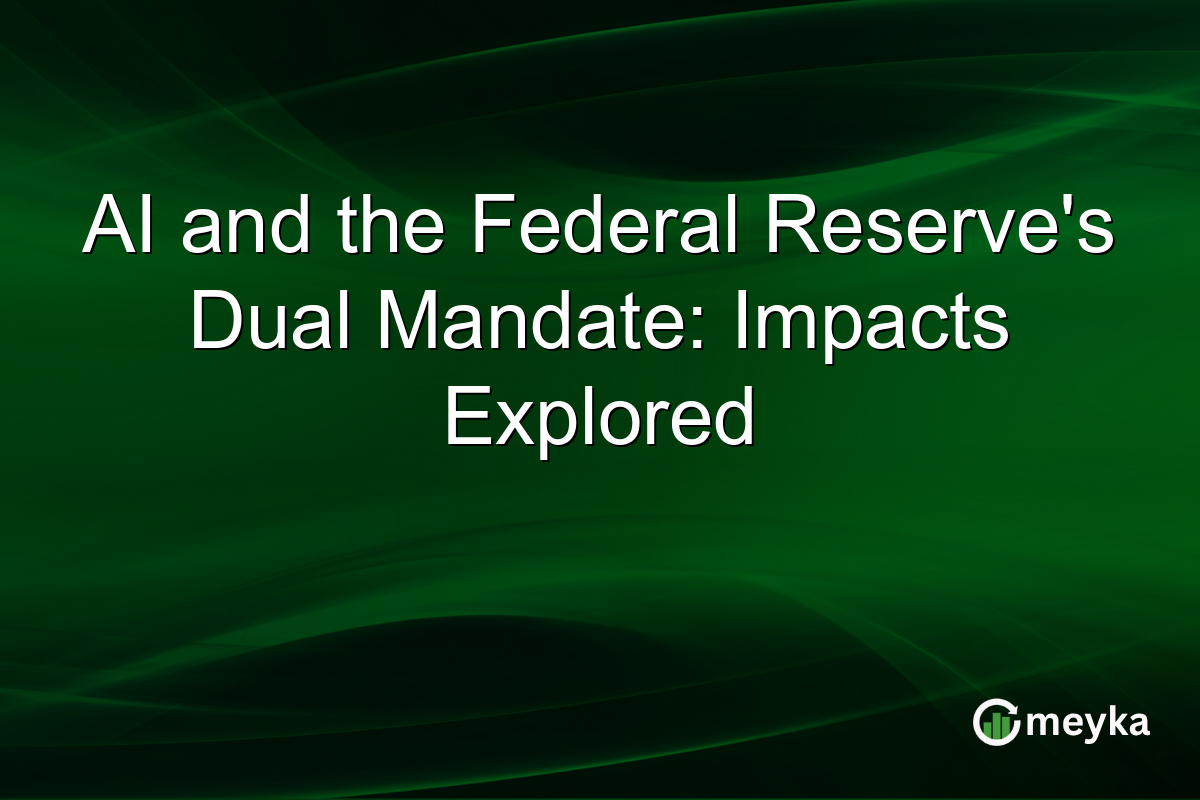AI and the Federal Reserve’s Dual Mandate: Impacts Explored
Artificial Intelligence (AI) is transforming various sectors, and its influence on economic policy is becoming more evident. The Federal Reserve, responsible for fostering price stability and maximum employment, is now considering AI’s impacts on its dual mandate. Recently, Vice Chair Jefferson highlighted AI’s potential effects on employment and price stability, sparking a broader discussion about AI in economic strategy. This highlights AI’s growing significance in shaping economic conditions and necessitates an examination of its potential implications on policy development.
The Role of AI in Economic Policy
AI technology has advanced rapidly, influencing economic policies worldwide. This innovation offers new tools for analyzing vast amounts of data, potentially improving decision-making and efficiency in policy formulation. The Federal Reserve is gradually exploring these tools to enhance its ability to predict economic trends and respond to market fluctuations.
For instance, AI can process complex datasets faster than traditional methods, providing deeper insights into economic indicators like employment rates and inflation. By enabling more precise forecasting, AI helps policymakers make informed decisions, aligning with the Federal Reserve’s goals of sustaining economic stability.
Moreover, AI’s role in reducing procedural delays and improving operational efficiency could become integral to the Fed’s future strategies, ensuring timely interventions in volatile markets.
AI’s Influence on Employment and Price Stability
Vice Chair Jefferson recently addressed how AI might affect the labor market and price stability, core elements of the Federal Reserve’s mandate. AI automation could lead to significant shifts in employment patterns, potentially increasing productivity yet challenging traditional labor markets. Jobs in manufacturing or clerical work might decline, while demand for AI-related roles increases.
This indicates a dual challenge: boosting employment in emerging sectors while addressing displacement concerns in others. On the price stability front, AI’s efficiency could help control inflation by reducing costs in sectors like manufacturing and logistics.
AI technologies also enable more granular analysis of market trends, helping to maintain stable prices through proactive policy adjustments. The Federal Reserve could leverage these AI insights to swiftly act on inflationary signals, supporting economic equilibrium.
AI’s Economic Strategies and Market Responses
Integrating AI into economic strategies is becoming essential for maintaining a competitive edge. The Federal Reserve’s adoption of AI could foster more resilient economic models, adjusting to changes in global markets. By integrating AI, the Fed can anticipate economic shifts earlier and minimize adverse impacts, offering a proactive approach to economic management.
Current market sentiment shows growing interest in AI-driven economic policies. Investors are closely watching how these technologies shape economic outcomes, suggesting a broader acceptance of AI as a cornerstone of future economic strategies. This growing interest is evident on platforms like X, where discussions about AI’s economic role continue to gain traction.
Ultimately, the key takeaway is that AI’s strategic use could enhance policy effectiveness, fostering confidence among investors and stakeholders alike.
Final Thoughts
The integration of AI into the Federal Reserve’s strategies promises to reshape economic planning significantly. AI’s capabilities in processing data enhance accuracy in predicting economic trends, which directly supports the dual mandate of employment and price stability. As the Federal Reserve navigates AI’s impacts, it underscores the importance of adapting to technological advancements in crafting economic policies.
Investors and policymakers must recognize the potential of AI to transform economic forecasting and decision-making. Embracing AI in economic strategies not only enhances stability but also aligns with the goals of sustained growth and market confidence. The Federal Reserve’s proactive stance suggests a future where AI-driven insights play a vital role in economic governance, fostering a balanced and resilient economic landscape.
Meyka, leveraging AI-powered insights, offers dynamic tools for investors to stay informed about these shifts, highlighting the broader move towards data-driven strategies in finance. Looking ahead, monitoring AI’s integration into economic policies will be crucial for all market participants.
FAQs
AI enhances data analysis and forecasting, supporting the Fed’s goals of price stability and maximum employment by improving decision-making and efficiency.
AI could automate routine jobs, increasing productivity but shifting labor demand to AI-driven roles, posing challenges in traditional job markets while creating new opportunities.
AI enhances cost efficiency and allows for precise monitoring of inflationary trends, enabling the Federal Reserve to react swiftly and maintain stable prices.
Disclaimer:
The content shared by Meyka AI PTY LTD is solely for research and informational purposes. Meyka is not a financial advisory service, and the information provided should not be considered investment or trading advice.






